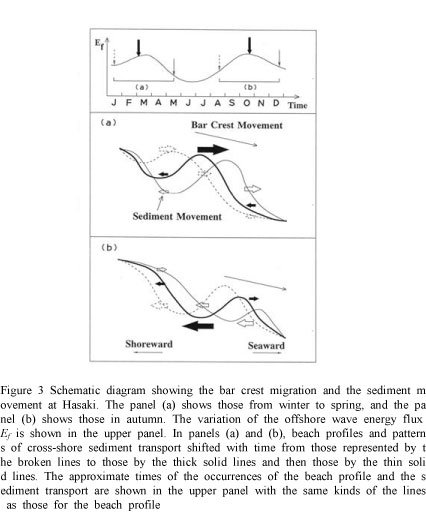Medium-term bar movement
The medium-term movement of a longshore bar and the associated cross-shore sediment transport were investigated using beach profile data obtained nearly daily for eight years from the seaward foot of a dune to a water depth of about 5 m at Hazaki Oceanographical Research Station (HORS). Figure 1 shows the superimposition of the beach profiles measured during the eight years, from 1987 to 1994.
Bar crests were found to move seaward repeatedly with a period of a year (Figure 2). The duration time of the seaward bar migration is shorter than those on the other coasts in the United States, the Netherlands and New Zealand. Although bars migrated in one direction, seaward, the cross-shore sediment transport rate associated with the bar migrations fluctuated seaward and shoreward. Seaward sediment transport occurred on and around bar crests, whereas shoreward sediment transport occurred in trough regions. The cross-shore sediment transport was active when the offshore wave energy was large, from winter to spring and in autumn. Figure 3 shows schematic diagram of the bar crest migration and the sediment movement with the offshore wave energy flux at Hasaki.

Figure1 Superimposition of beach profiles measured from 1987 to 1994.

Figure2 Variation from the beach profile at HORS. The elevations above and below the mean profile are shown by warm and cold colors, respectively.




